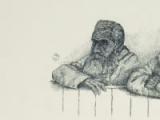What happened that day?
See historic events for any day of the year by entering the date below. Why not try your birthday?
Kiwi of the Week
Today in History

1868 Titokowaru's war begins
Three settlers were killed near Ketemarae, north of Hāwera, by Ngā Ruahine warriors acting on the orders of the spiritual leader Titokowaru. The deaths marked a change of strategy in the response to the confiscation of Māori land.
Titokowaru grew up in the shadow of the ‘musket wars’. He received formal training as a tohunga (Maori spiritual expert) before converting to Christianity in the early 1840s. His opposition to land-selling led him to support the King Movement (Kīngitanga). His first experience as a war leader came in Taranaki during the fighting of 1860–1. He lost an eye in the Pai Mārire attack on Sentry Hill in April 1864.
In 1867 Titokowaru began to campaign for peace and held a series of large hui. He renounced his connection with the Kīngitanga and called for peaceful resistance. His hopes for reconciliation were dashed by the government’s ‘creeping confiscation’ of Taranaki land. By 1868 Ngā Ruahine faced a stark choice: war or starvation. Titokowaru began a campaign of plunder without bloodshed. Government forces responded by seizing stolen goods and taking prisoners. When Titokowaru refused to return an escaped prisoner, war broke out in earnest.
Image ref: B-034-015, Alexander Turnbull Library




















